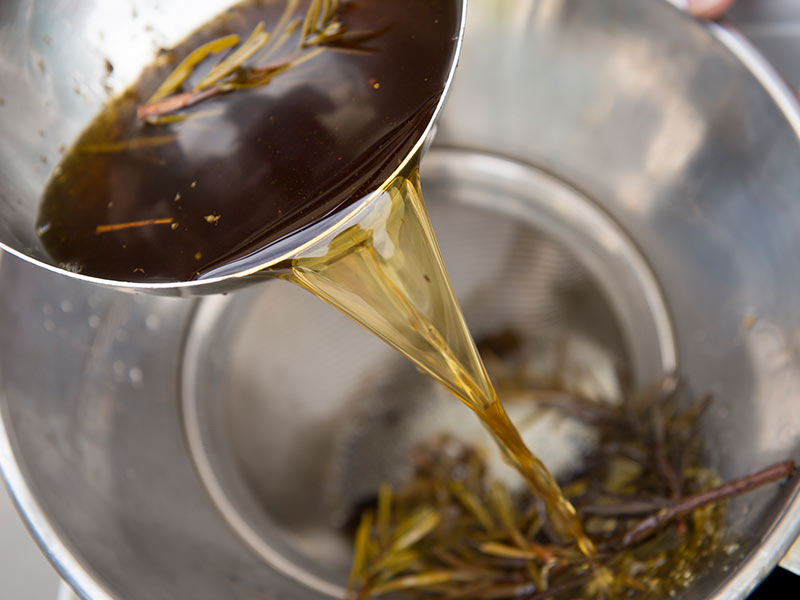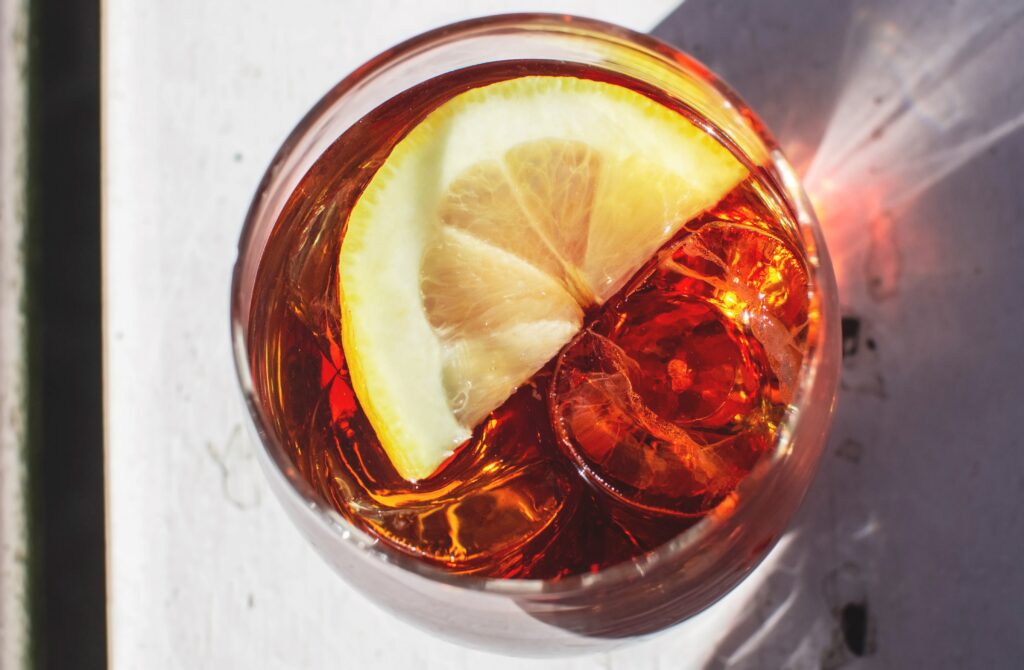Cocktails in the United States and abroad have been increasing in popularity in recent years with many playing the role of mixologist at home. Yet, an ingredient that has long been in second position to whiskey, gin or vodka in famous cocktails like Manhattans, Negronis, and Martinis, is now standing on its own, and rightfully so! This is vermouth, an international cocktail gem, with its beautiful, glistening white or luscious red hue.
Wine + Botanicals + Neutral Spirit
Vermouth is sometimes referred to as a spirit because it is often mixed with other spirits to make cocktails. But vermouth is a wine-based beverage that has been fortified with a neutral spirit (often brandy), and then infused with a secret mixture of herbs and botanicals which add flavor, color and individual uniqueness to this delicious liquid. The easy visual to remember: Wine + Botanicals + Neutral Spirit.
Each vermouth producer has its own original recipe, often never revealing the real mixture or the botanicals used. Just like old Italian food recipes passed down for generations – certain ingredients are omitted to maintain secrecy. Some makers will use up to 30 different botanicals, like wormwood, grapefruit peel, vanilla and orange peel.
Vermouthm, an international cocktail gem, ranges from dry to sweet and some in between. Dry vermouth is typically clear, and called white vermouth, bianco or blanco. Sweet vermouth is most of the time a reddish-orange hue and acquires its color from a few different components – aging of the base wine, caramel that is often derived naturally with small artisanal producers or caramel coloring. The reddish, sweeter style is used to make the famous Negroni cocktail, or a Negroni Sbagliato. See below.
Small-production vermouths are hand-crafted, while mass-produced ones are made in larger quantities as the name implies. Small producers may conduct a longer botanical infusion process in house, thus extracting richer flavors. Smaller producers often create without using bulking agents or industrial colorants.

Photo courtesy of Antica Torino
Its History
Reportedly, vermouth originated in the 18th century by Antonio Benedetto Carpano, from Italy, specifically the city of Turin (Torino), for medicinal purposes. It also had a long aristocratic history involving the Savoy family, supposedly becoming the beverage of this royalty.
But over the years, vermouth’s popularity waxed and waned, until recently with the cocktail resurgence and widely sought after Negroni cocktail. There is also the Negroni Sbagliato – translated as the mistaken Negroni – a cocktail with a history in which an Italian bartender accidentally used sparkling wine instead of gin to make the Negroni. And, the Negroni Sbagliato was born.
Not all Vermouths, like any beverage, are created equal. While vermouth hails from many countries – Italy, France, Spain, South Africa, the U.S. – Italy is the most popular and there is only one Vermouth di Torino. The production of Vermouth di Torino is controlled by Italian law to ensure its quality, and that others do not use the term “Vermouth di Torino” unless it adheres to its specific rules. (Like Champagne in France, Champagne cannot be called as such unless it comes from that area and adheres to certain rules).
How to Enjoy Vermouth
Vermouth is a great beverage to prep the stomach with before a meal, during aperitivo time, a time before dinner that is popular in Italy. (See Best Tips to Travel Italy.) Good sweet or dry vermouth, like a good scotch, can be enjoyed alone or over ice and topped with a touch of club soda, twist of lemon or orange.
Vermouth has a life cycle, like wine, before its quality deteriorates. After you open it, store vermouth in the refrigerator for up to four weeks. Enjoy, get creative and try crafting one of these easy cocktails at home!
Classic Negroni – equal parts gin, red vermouth & red bitter liqueur*
Negroni Bianco – equal parts gin, white vermouth & white bitter liqueur
Negroni Sbagliato – equal parts sparkling wine, red vermouth & red bitter liqueur
(*Campari has been the red bitter liqueur to make Negronis. Today, other producers make this red bitter liqueur.)
My artisan vermouth recommendations:
Antica Torino, Vermouth di Torino, Italy
Berto Vermouth Bianco, Italy
Greenvale Vineyards Dry Vermouth, Rhode Island






0 Comments